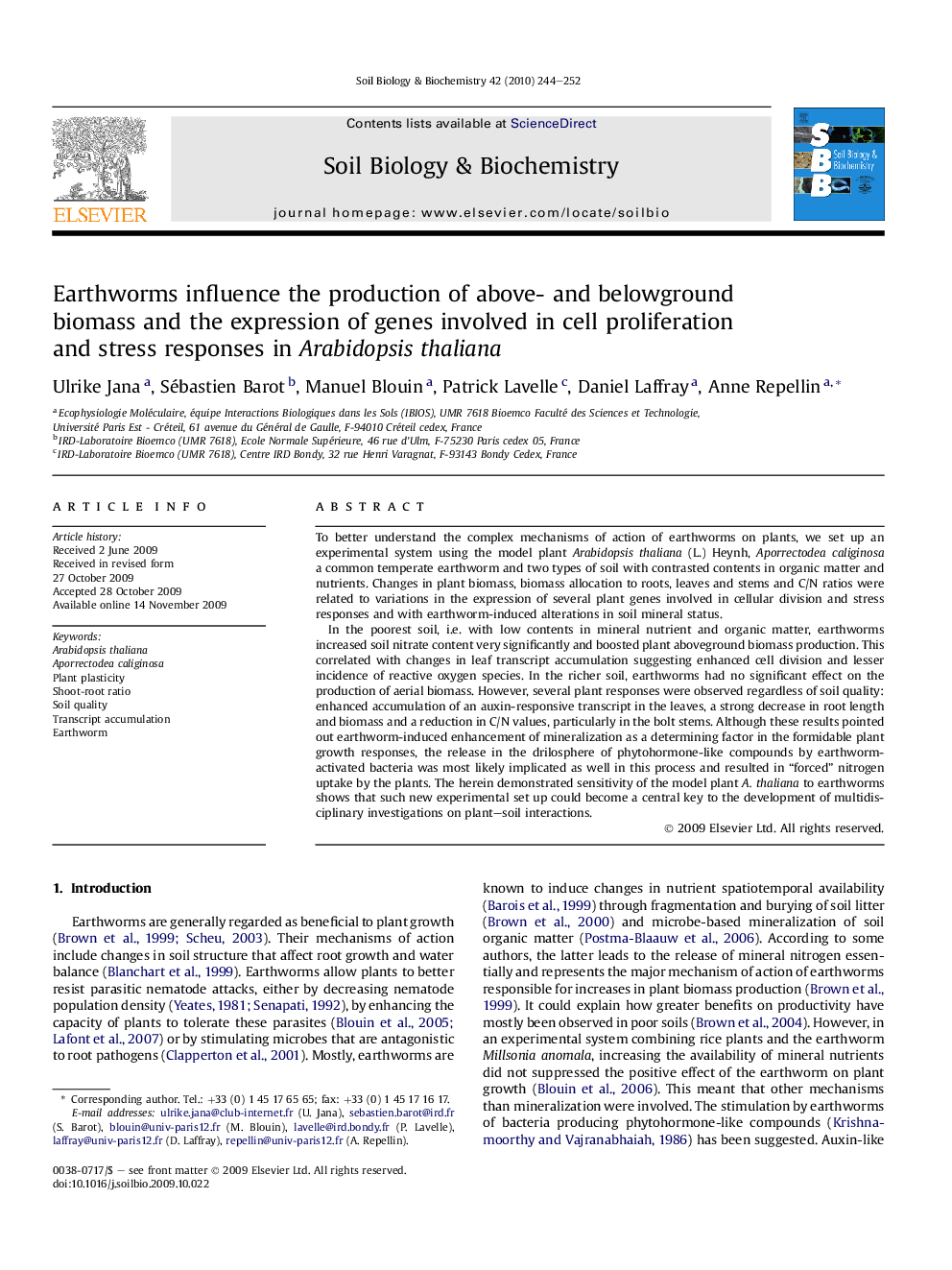| کد مقاله | کد نشریه | سال انتشار | مقاله انگلیسی | نسخه تمام متن |
|---|---|---|---|---|
| 2025132 | 1069982 | 2010 | 9 صفحه PDF | دانلود رایگان |

To better understand the complex mechanisms of action of earthworms on plants, we set up an experimental system using the model plant Arabidopsis thaliana (L.) Heynh, Aporrectodea caliginosa a common temperate earthworm and two types of soil with contrasted contents in organic matter and nutrients. Changes in plant biomass, biomass allocation to roots, leaves and stems and C/N ratios were related to variations in the expression of several plant genes involved in cellular division and stress responses and with earthworm-induced alterations in soil mineral status.In the poorest soil, i.e. with low contents in mineral nutrient and organic matter, earthworms increased soil nitrate content very significantly and boosted plant aboveground biomass production. This correlated with changes in leaf transcript accumulation suggesting enhanced cell division and lesser incidence of reactive oxygen species. In the richer soil, earthworms had no significant effect on the production of aerial biomass. However, several plant responses were observed regardless of soil quality: enhanced accumulation of an auxin-responsive transcript in the leaves, a strong decrease in root length and biomass and a reduction in C/N values, particularly in the bolt stems. Although these results pointed out earthworm-induced enhancement of mineralization as a determining factor in the formidable plant growth responses, the release in the drilosphere of phytohormone-like compounds by earthworm-activated bacteria was most likely implicated as well in this process and resulted in “forced” nitrogen uptake by the plants. The herein demonstrated sensitivity of the model plant A. thaliana to earthworms shows that such new experimental set up could become a central key to the development of multidisciplinary investigations on plant–soil interactions.
Journal: Soil Biology and Biochemistry - Volume 42, Issue 2, February 2010, Pages 244–252